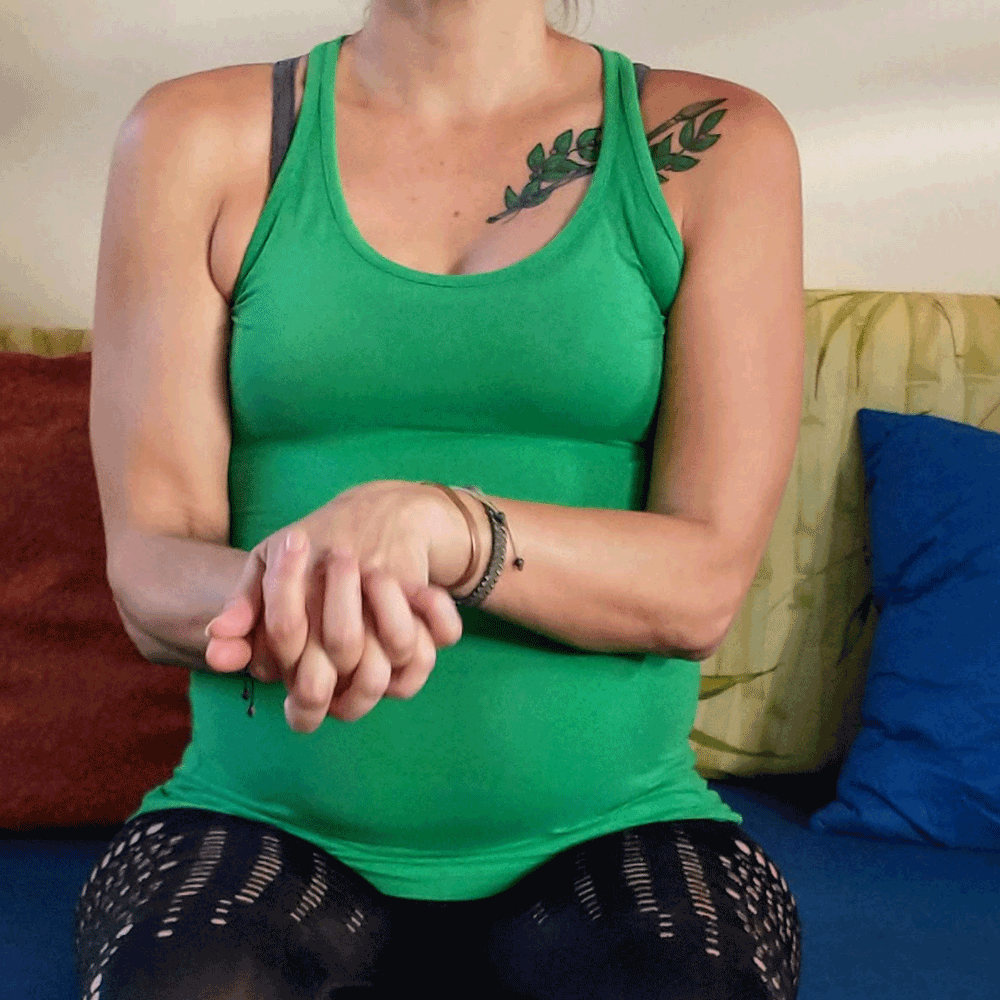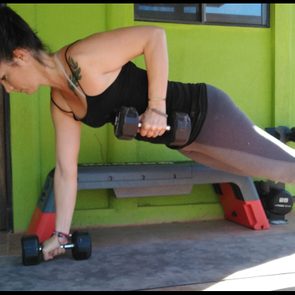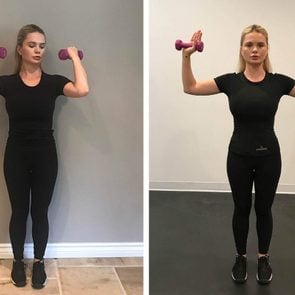4 Forearm Stretches That Can Help Prevent Wrist Pain and Problems
Updated: Mar. 14, 2022
When your forearms are feeling tight or irritated, try these forearm stretches to ease your wrist pain, increase flexibility, and prevent pain from conditions like carpal tunnel syndrome.
The importance of flexible forearms
Unless you’re a baseball player, tennis player, or competitive weight lifter, chances are you don’t think a whole lot about your forearm strength or flexibility.
The reality is you use your hands practically all day, every day, to perform small and large tasks. And what makes this movement possible? Your forearms, of course.
“The forearm is easily one of the more overlooked body parts that requires stretching,” says Joshua Margolis, certified personal trainer and the CEO of Mind Over Matter fitness service in New York City. “The forearm is engaged in any exercise where you’re gripping—so basically any upper-body exercise where you use a weight.”
But you’re not just using your forearms in the gym. Think about it: you use them whenever you grip anything, whether it’s a doorknob, your toothbrush, or the handle of a pot while you’re cooking.
Your forearms are necessary for any movement of the wrist, so they’re also constantly in use as you type, wave to your friends, or search through your bag to find your wallet.
Tight forearms can interfere with daily life
If you’re using your hands a lot, you’re likely to end up with tight forearms.
“Tight forearms are a result of using them. A lot of use will make your muscles tight,” says Theresa Marko, a board-certified orthopedic clinical specialist in physical therapy and owner of Marko Physical Therapy in New York City.
And that can lead to other problems.
“This can result in pain at the wrist, possible tendinitis [inflammation of a tendon] at the top of your hand, or perhaps carpal tunnel syndrome on the other side,” she says. “You can also have pain at the elbow with the tendons there, which is called golfer’s or tennis elbow, or pain in the thumb from overuse.”
This is exactly why you should include regular forearm stretches in your daily routine.
As Marko points out, you need your hands to function in everyday life, and if you’re dealing with tightness or soreness at your forearms, it could be a matter of time before you end up in serious pain.
“This problem doesn’t tend to get better if you just ignore it,” Marko says. “It can progress to the point where you might be in so much pain you’re unable to function with your hands and forearms.”
Forearm stretches
The good news is, you can stretch your forearms pretty much anywhere, anytime. And regular stretching can help you maintain proper mobility at your wrist.
Good wrist mobility helps stave off other mechanical problems, injuries, and pain from conditions like carpal tunnel syndrome.
Try incorporating these stretches, suggested by Marko and Margolis, into your daily routine.
Wrist figure eights
Consider wrist figure eights a dynamic stretching warm-up for your wrists. This stretch is perfect to perform as you sit down in front of your desk before you spend hours typing away, or as part of an active warm-up before a workout.
In fact, if you have a desk job, consider setting an alarm for once an hour to stop your work and perform another round of these figure eights. You can easily stretch at your desk.

How to do it
Sit up tall with your feet planted roughly hip distance apart. With your upper arms fixed at your sides and your elbows bent at 90-degree angles, clasp your hands together (fingers interlaced) in front of your torso.
Begin making a figure-eight movement with your wrists. First, you’ll turn your hands to the left so your right hand is positioned atop your left. Then you’ll turn your hands to the right, with your left hand positioned atop your right.
Complete two sets of 20 figure eights.
(These are the reasons you might be dealing with thumb pain.)
Overhead reach
For an excellent forearm stretch that includes elbow extension and wrist hyperextension, perform the static overhead reach.

How to do it
Sit or stand tall, your feet planted roughly hip distance apart.
Check your posture to make sure your ears are aligned with your shoulders and hips (if seated), as well as your knees and ankles (if standing).
Reach both arms directly overhead and clasp your hands together, interlacing your fingers.
Take a breath in, and as you exhale, turn your palms forward and then upward so they’re facing the ceiling.
Press higher with your shoulders and wrists, aiming to further extend your wrists until you feel a stretch through your forearms. Hold the position for 30 seconds.
Release the stretch, then repeat two more times.
Fisted wrist flexion
This forearm stretch is great if you’re feeling tight through the tops of your forearms and into your hands.

How to do it
Sit up tall with good posture, your feet planted roughly hip distance apart.
Tip forward from your hips, maintaining good posture, and rest your forearms on your thighs, your palms facing up.
Make fists with both hands (but don’t squeeze them too tight).
Take a breath in. As you exhale, flex your wrists, drawing them upward so your palms face toward you. Hold for two beats before releasing and returning to the starting position.
Perform two sets of 20 repetitions.
(Address your rounded shoulders with these exercises.)
Wrist hyperextension
This wrist hyperextension exercise offers a good stretch on the inside of your wrist toward the pinkie side of your forearm.

How to do it
Sit or stand tall with your feet planted roughly hip distance apart. Be mindful of maintaining good posture.
Extend your right arm straight in front of your shoulder, your palm facing up.
Extend your wrist downward, so your fingers point toward the floor. Use your left hand to gently pull the right fingers down and back. This will help extend your right wrist further into the stretch.
When you feel a stretch on the inside of your right forearm, stop the stretch and hold the position for 30 seconds. Release, then repeat two more times before switching arms.
Next, learn about the types of stretching experts recommend.























